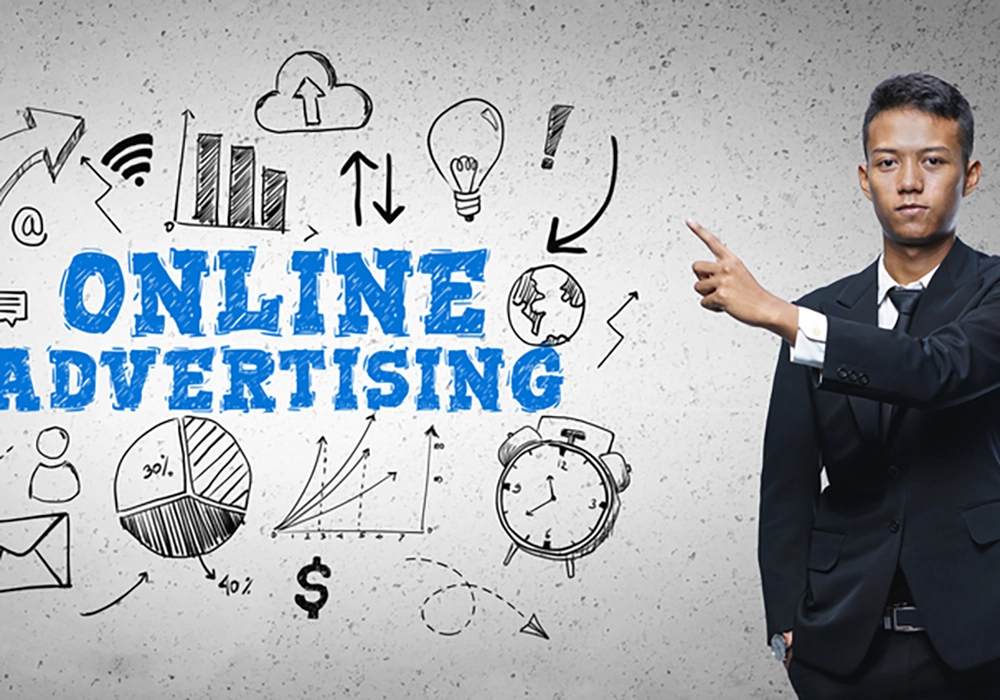Today’s marketing landscape is full of businesses. They are always seeking new ways to get consumers’ attention and drive sales. Two strategies that have gained significant traction are social proof and traditional advertising.
Traditional advertising has long been a staple in marketing campaigns. But, social proof has emerged as a powerful tool in influencing consumers. In this article, we will explore the differences between these two approaches. We will also look at how well they work in the always changing marketing landscape.
Key Takeaways:
- Traditional advertising and social proof are two distinct strategies in marketing.
- Traditional advertising relies on paid media channels to reach target audiences.
- Social proof leverages the influence of others’ opinions and experiences to build trust.
- Traditional advertising has adapted to the digital age with online channels.
- Social proof has evolved in the digital era through online reviews and social media.

Understanding Traditional Advertising
Traditional advertising has long been a cornerstone of marketing strategies, utilizing a variety of forms and channels to reach target audiences. From print advertisements in newspapers and magazines to television and radio commercials, traditional advertising has been a trusted and effective method for promoting products and services.
One of the key factors contributing to the effectiveness of traditional advertising is its ability to leverage multiple channels to reach a wide audience. Whether it be through billboards, direct mail, or even telemarketing, traditional advertising offers diverse platforms to engage with consumers.
“Traditional advertising allows brands to create a tangible presence in the physical world and establish credibility through familiarity.”
Furthermore, traditional advertising’s tangible nature can leave a lasting impact on consumers. For instance, a well-designed print advertisement in a magazine can capture attention and instill brand recall. Similarly, a memorable jingle played on the radio can create a lasting association between the brand and the melody.
While the effectiveness of traditional advertising is undeniable, it is important to recognize that the rise of digital marketing has transformed the advertising landscape. Marketers now face the challenge of adapting their strategies to engage with a digitally-savvy audience.
Forms and Channels of Traditional Advertising
| Form | Channels |
|---|---|
| Print Advertising | Newspapers, Magazines, Brochures |
| Television Advertising | Commercial Breaks, Infomercials |
| Radio Advertising | Commercials, Sponsorships |
| Outdoor Advertising | Billboards, Posters, Signage |
| Direct Mail Advertising | Brochures, Catalogs, Flyers |
| Telemarketing | Phone Calls, Cold Calling |
In conclusion, traditional advertising remains relevant and effective in reaching target audiences and driving results. Its ability to utilize various channels and leave a lasting impact on consumers make it a valuable tool in a marketer’s arsenal. However, it is vital for marketers to also embrace digital marketing strategies to adapt to the evolving marketing landscape.
The Power of Social Proof
Social proof has become a powerful tool in shaping consumer behavior and influencing purchasing decisions. In today’s digital age, consumers are constantly bombarded with advertisements and marketing messages, making it increasingly difficult for brands to stand out and build trust. This is where social proof comes in.
Social proof refers to the concept of leveraging the influence of others’ opinions and experiences to validate and persuade potential customers. It taps into the innate human tendency to seek guidance and reassurance from others when making decisions. By showcasing positive feedback, reviews, testimonials, and user-generated content, brands can create a sense of credibility and reliability.
The influence of social proof on consumer behavior cannot be underestimated. When individuals see that others have had positive experiences with a product or service, they are more likely to trust the brand and feel confident in their own purchasing decisions. Social proof acts as a powerful form of validation, reducing perceived risks and increasing the likelihood of conversions.

“Social proof is a psychological phenomenon where people assume the actions of others in an attempt to reflect correct behavior for a given situation.” – Robert Cialdini, Influence: The Psychology of Persuasion
One of the most effective forms of social proof is online reviews. Research shows that a majority of consumers trust online reviews as much as personal recommendations. When potential customers read positive reviews from others who have already purchased a product or used a service, they are more likely to view it favorably and consider making a purchase themselves.
Social media also plays a significant role in social proof. When individuals see their peers, influencers, or celebrities endorsing a brand or product on social media platforms, it creates a sense of trust and reliability. This can lead to increased brand awareness, engagement, and ultimately, conversions.
As consumers become more skeptical of traditional advertising methods, social proof offers a more authentic and genuine way for brands to connect with their target audience. By leveraging the power of social proof, brands can tap into the influence of others, build trust, and drive consumer behavior in their favor.
Traditional Advertising in the Digital Age
In today’s digital age, traditional advertising strategies have had to adapt to the evolving marketing landscape. With the rise of digital marketing and online channels, marketers face new challenges in capturing the attention of digital-savvy consumers while maintaining the effectiveness of traditional advertising.
Traditional advertising encompasses offline promotional activities such as print ads, billboards, radio, and television commercials. These channels have long been the backbone of advertising campaigns, reaching large audiences and establishing brand presence.
However, in the digital era, marketers must find ways to integrate traditional advertising with online channels to maximize their reach and impact. Digital marketing offers unprecedented opportunities for targeted advertising, personalized messaging, and real-time tracking of campaign performance.
One way traditional advertising has transitioned to the digital age is through the utilization of online platforms. Print ads have transformed into digital banners, billboards have found new homes on websites, and television commercials have expanded into video ads on streaming platforms.

Marketers now have the ability to create meaningful connections with consumers through engaging content, interactive experiences, and targeted messaging. By leveraging online channels, traditional advertising can be tailored to specific audiences and delivered at the right time and right place.
Additionally, the integration of digital marketing and traditional advertising allows for comprehensive campaign tracking and measurement. Marketers can gather valuable data on consumer behavior, engagement rates, and ad performance, enabling them to make data-driven decisions to optimize their advertising efforts.
Nonetheless, traditional advertising in the digital age comes with its own set of challenges. With the proliferation of online content and the rise of ad-blocking technology, capturing and retaining consumers’ attention has become increasingly difficult. Marketers must find innovative ways to break through the digital clutter and deliver impactful messages that resonate with their target audience.
Furthermore, the instantaneous and interactive nature of digital marketing requires traditional advertising strategies to be nimble and adaptable. Marketers must embrace new technologies, platforms, and trends to stay relevant and competitive in the rapidly evolving digital landscape.
Traditional Advertising in the Digital Age – Examples
Here are some examples of how traditional advertising has embraced the digital age:
- Print advertisements have transitioned into digital banners on websites, reaching a wider online audience.
- Billboards have taken on digital forms, displaying dynamic and interactive content to capture attention.
- Television commercials have evolved into video ads on streaming platforms, reaching viewers on their preferred digital channels.
- Radio advertisements have extended their reach through podcasts and streaming services.
By seamlessly integrating traditional advertising with digital marketing, brands can leverage the strengths of both strategies and create impactful campaigns that resonate with consumers in the digital age.
| Traditional Advertising | Digital Marketing |
|---|---|
| Offline promotional activities | Online channels |
| Large audience reach | Targeted advertising |
| Established brand presence | Personalized messaging |
| Print ads, billboards, radio, TV commercials | Digital banners, video ads, streaming platforms |
Social Proof in the Digital Era
In today’s digital era, social proof has become a powerful tool for brands to shape consumer perceptions and enhance their online presence. With the rise of online reviews and the influence of social media, social proof has undergone a significant transformation.
The importance of online reviews cannot be overstated. Customers now have the ability to research and evaluate products and services before making a purchase, relying heavily on the feedback and experiences of others. Positive online reviews act as testimonials, providing a sense of credibility and trustworthiness that traditional advertising alone may struggle to achieve.
Social media platforms have also played a vital role in the evolution of social proof. People turn to social media for recommendations, seeking validation from their peers and influencers before making decisions. When they see others endorsing a brand or product, it creates a sense of confidence and social validation.
Brands can leverage social proof in various ways to enhance their digital marketing efforts. By strategically integrating online reviews and testimonials into their website, they can showcase positive feedback from satisfied customers. This provides reassurance to potential buyers and helps build trust.
Additionally, actively engaging with customers on social media platforms allows brands to tap into the power of user-generated content and influencer endorsements. Encouraging customers to share their experiences and tag the brand in their posts can amplify positive word-of-mouth and increase brand visibility.
“Social proof is the new currency of trust in the digital age. It’s not just about what a brand says about itself, but about what others say about the brand.”
Example of Brands Utilizing Social Proof:
| Brand | Social Proof Strategy |
|---|---|
| Amazon | Displaying customer reviews and ratings prominently on product pages |
| Starbucks | Encouraging customers to share photos of their Starbucks experience on social media with branded hashtags |
| Booking.com | Highlighting the number of bookings in a specific location to create a sense of popularity and trust |
| GoPro | Partnering with influential athletes and adventurers to showcase the versatility and durability of their products |
In the digital era, social proof is a critical component of a successful marketing strategy. By harnessing the power of online reviews and leveraging social media, brands can build credibility, foster trust, and ultimately drive greater customer engagement and conversions.
Conclusion
In today’s marketing landscape, the effectiveness of traditional advertising and social proof cannot be overlooked. Both strategies play a crucial role in influencing consumer behavior and driving marketing success.
Traditional advertising has long been a staple in the marketing world, encompassing various channels such as television, radio, print, and outdoor media. While its effectiveness may have diminished in the digital age, it still holds value in reaching a wide audience and creating brand awareness.

On the other hand, social proof has emerged as a powerful tool in the digital era. Through online reviews, social media, and influencer marketing, brands can harness the influence of others’ experiences to build trust and credibility among consumers. The impact of social proof on consumer purchasing decisions cannot be understated.
Instead of pitting traditional advertising against social proof, it is important to recognize the synergy between these two strategies. By integrating traditional advertising with social proof, brands can create a comprehensive marketing approach that leverages the strengths of each strategy. This collaboration allows for broader reach, enhanced brand perception, and increased marketing effectiveness.
FAQ
What is traditional advertising?
Traditional advertising refers to the conventional methods of promoting products and services, such as television commercials, radio ads, print advertisements, and billboards.
How effective is traditional advertising?
The effectiveness of traditional advertising can vary depending on the target audience and the chosen channels. While it has been a successful strategy in the past, the increasing fragmentation of media and changing consumer behavior have posed challenges to its effectiveness.
What are some common channels used in traditional advertising?
Common channels used in traditional advertising include television, radio, newspapers, magazines, direct mail, and outdoor advertising.
What is social proof?
Social proof is a psychological phenomenon where people assume that the actions and opinions of others reflect correct behavior. In marketing, social proof refers to leveraging the influence of others’ opinions and experiences to build trust and influence consumer behavior.

How does social proof impact consumer behavior?
Social proof holds significant influence over consumer behavior by providing reassurance and validation. When consumers see positive reviews, testimonials, or social media endorsements, they are more likely to trust the product or service and make a purchasing decision.
What are online reviews?
Online reviews are evaluations or feedback provided by consumers about a product, service, or brand on the internet. They are often displayed on platforms such as review websites, e-commerce sites, and social media.
How can brands leverage social proof in their digital marketing efforts?
Brands can leverage social proof by encouraging positive online reviews, showcasing testimonials, partnering with influencers, and actively engaging with customers on social media platforms. By incorporating social proof into their digital marketing strategies, brands can enhance credibility and attract more customers.
How has traditional advertising adapted to the digital age?
Traditional advertising has adapted to the digital age by incorporating online channels such as display ads, video ads, and native ads. Many traditional advertising methods now have digital counterparts, allowing marketers to reach broader audiences through online platforms.
Can traditional advertising be effective in the digital age?
While traditional advertising may face challenges in capturing the attention of digital-savvy consumers, it can still be effective when combined with a comprehensive digital marketing strategy. Integrating traditional and digital advertising channels can lead to a more holistic approach to reach and engage target audiences.




Leave a Reply